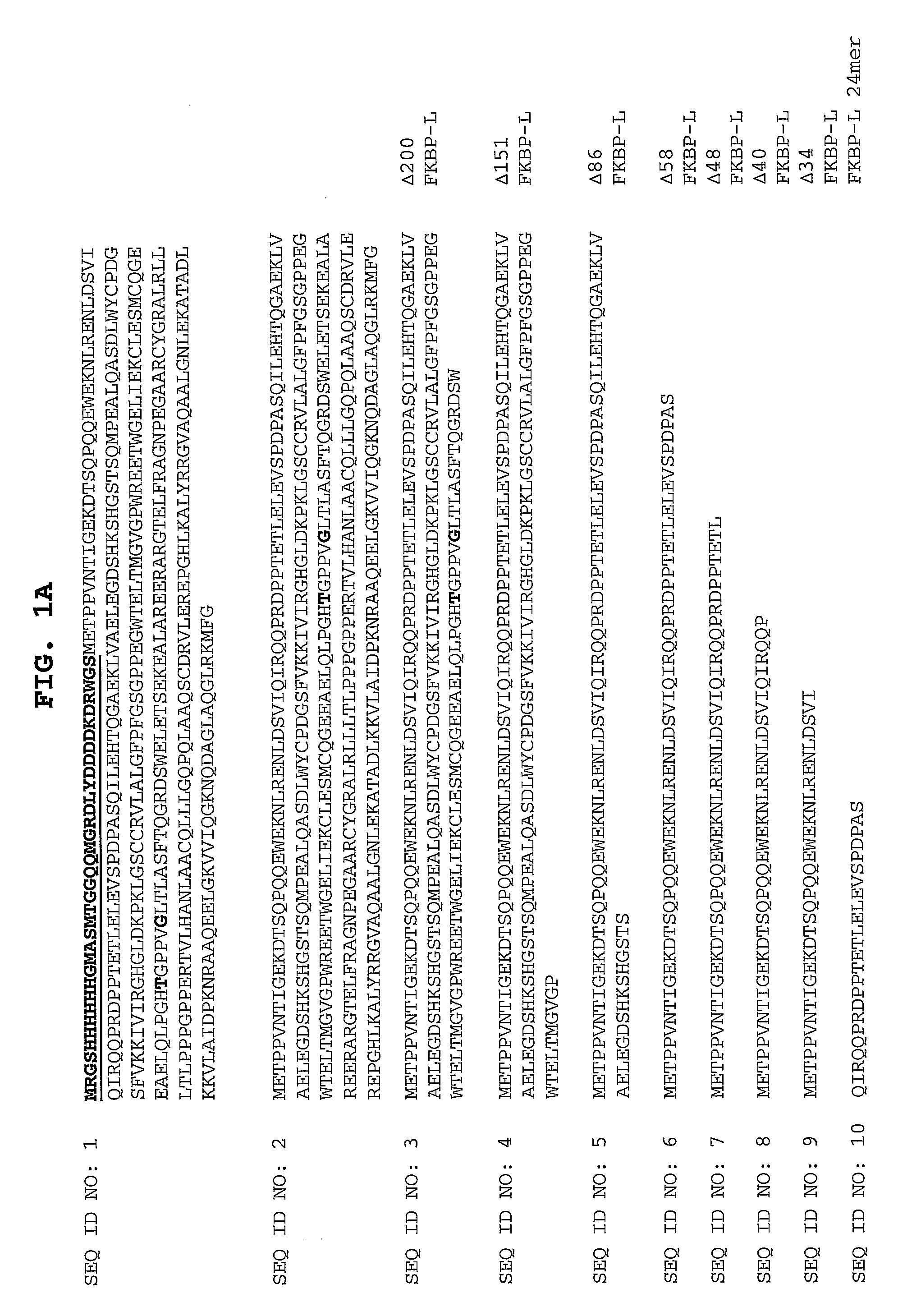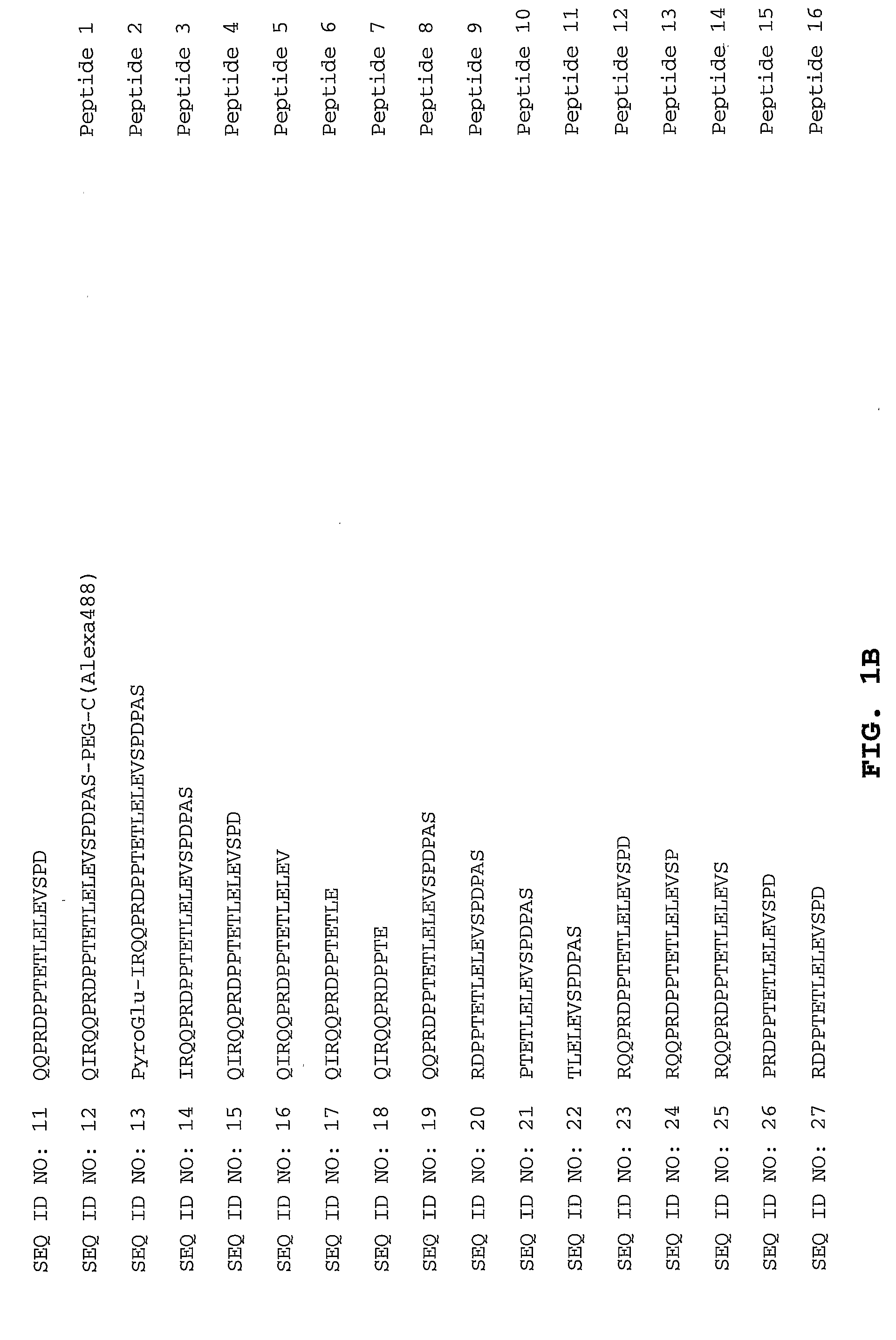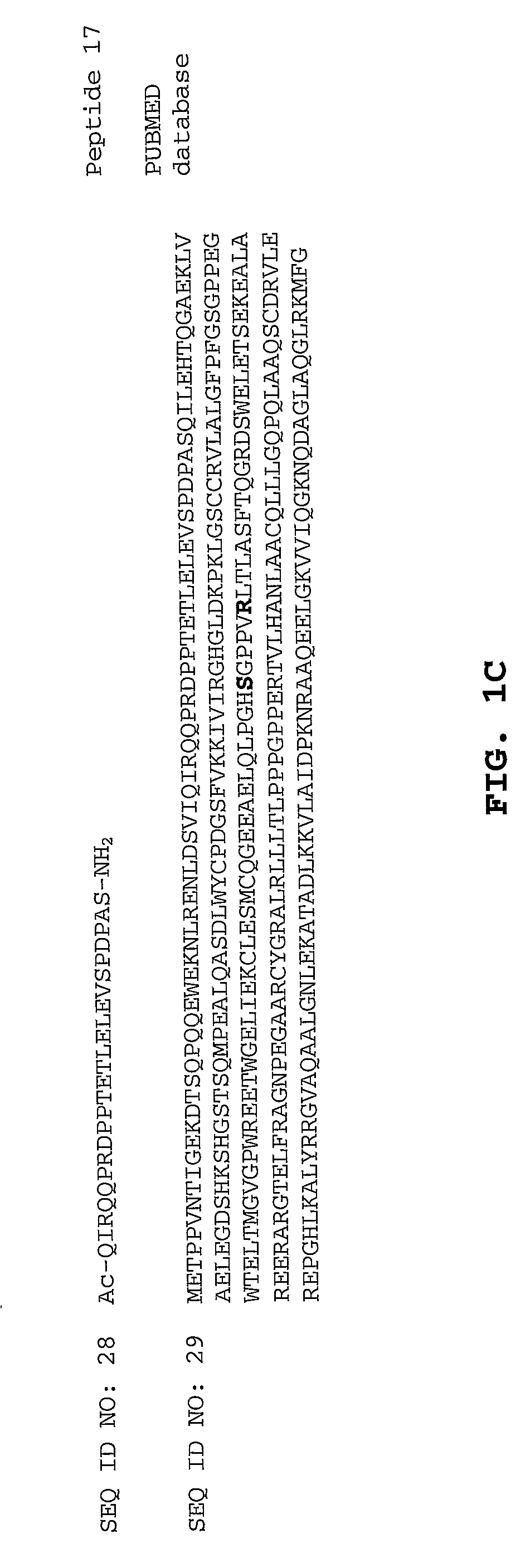FKBP-L And Uses Thereof
a technology of fkbpl and peptides, which is applied in the field of fkbpl polypeptides, fkbpl peptide derivatives, and fkbpl polypeptides, which can solve the problems of difficult target of mass, frequent classification of vulnerable endothelial cells in the supply vasculature, and difficult targeting of mass
- Summary
- Abstract
- Description
- Claims
- Application Information
AI Technical Summary
Benefits of technology
Problems solved by technology
Method used
Image
Examples
example 1
Transient Transfection of FKBP-L Inhibits Wound Closure (N=3)
[0272]Experiments were done to determine the effect of FKBP-L (SEQ ID NO: 1; FIG. 1) on wound closure. The in vitro migration assay used in these studies is a modified version of the method described by Ashton et al (1999) The J. of Biol. Chem., 1999, 274: 50, 35562-35570. Human Microvascular Endothelial Cells (HMEC1) were plated into individual chambers on a glass slide and grown to 90% confluence.
[0273]The monolayer was transfected with a FKBP-L / pcDNA mammalian expression construct having an insert with the nucleotide sequence of SEQ ID NO: 31, in the presence of lipofectin (Invitrogen, UK). To make the expression construct, the nucleic acid fragment of SEQ ID NO: 31 was excised from a recombinant pUC18 construct using BamH1 and ligated into the BamH1 restriction site of pcDNA3.1 (Invitrogen).
[0274]Expression of the FKBP-L insert generates the full-length recombinant polypeptide in SEQ ID NO: 2. After 6 hours the transfe...
example 2
Full Length Recombinant FKBP-L Protein Inhibits Endothelial Cell Migration in the Wound Closure Assay (N=3)
[0277]The in vitro migration assay used in these studies is a modified version of the method described by Ashton et al (1999). HMEC-1 were plated into individual chambers on a glass slide and grown to 90% confluence overnight. The medium was removed and the monolayer wounded. The monolayer was re-supplemented with fresh medium and the required volume of recombinant full length his-tagged FKBP-L protein (SEQ ID NO: 1) was added to give the required final concentration.
[0278]In order to generate the recombinant full length FKBPL protein, the FKBPL cDNA (polynucleotide SEQ ID:31; polypeptide variant Thr182, Gly186; SEQ ID NO:1) was subcloned from pcDNA3.1 / FKBPL into the BamHI and PstI sites of the pRSET-A vector (Invitrogen) and was expressed in BL21 (DE3) to give the corresponding N-terminal poly-histidine tagged (his-tag) protein (SEQ ID NO: 1). Expression was induced at OD 0.6 ...
example 3
FKBP-L Protein is Secreted from HMEC-1 Cells (N=1)
[0282]Human Microvascular Endothelial Cells (HMEC1) were plated onto 35 mm plastic culture plates and grown to 100% confluence. The monolayer was transfected with an haemagglutanin (HA)-tagged FKBP-L / pcDNA mammalian expression construct in the presence of lipofectin (Invitrogen, UK). This would result in expression of SEQ ID NO: 2 with a HA tag.
[0283]In order to generate the HA-tagged FKBPL plasmid, the FKBPL cDNA (polynucleotide SEQ ID NO:31; polypeptide variant Thr182, Gly186; SEQ ID NO:2) was excised from pUC18 by digestion with BamHI, blunt ended and directionally cloned into a blunt ended SalI site of pCMV-HA mammalian expression vector (Clontech, U.K.). This results in expression of SEQ ID NO: 2, with an N-terminal HA-tag to produce a 44 kDa protein.
[0284]After 6 hours the transfection reagents were removed and the monolayer wounded (controls were unwounded) with a pipette tip and re-supplemented with MCDB-131 and incubated for...
PUM
| Property | Measurement | Unit |
|---|---|---|
| temperature | aaaaa | aaaaa |
| temperature | aaaaa | aaaaa |
| molecular weight | aaaaa | aaaaa |
Abstract
Description
Claims
Application Information
 Login to View More
Login to View More - R&D
- Intellectual Property
- Life Sciences
- Materials
- Tech Scout
- Unparalleled Data Quality
- Higher Quality Content
- 60% Fewer Hallucinations
Browse by: Latest US Patents, China's latest patents, Technical Efficacy Thesaurus, Application Domain, Technology Topic, Popular Technical Reports.
© 2025 PatSnap. All rights reserved.Legal|Privacy policy|Modern Slavery Act Transparency Statement|Sitemap|About US| Contact US: help@patsnap.com



